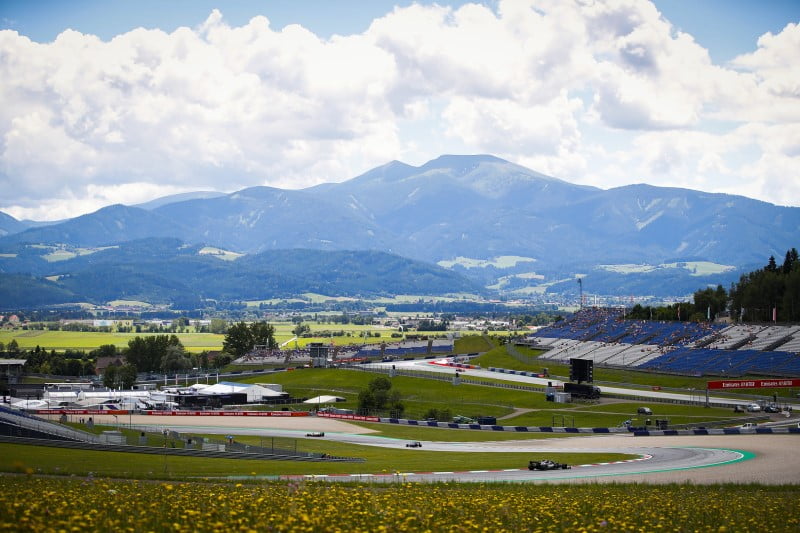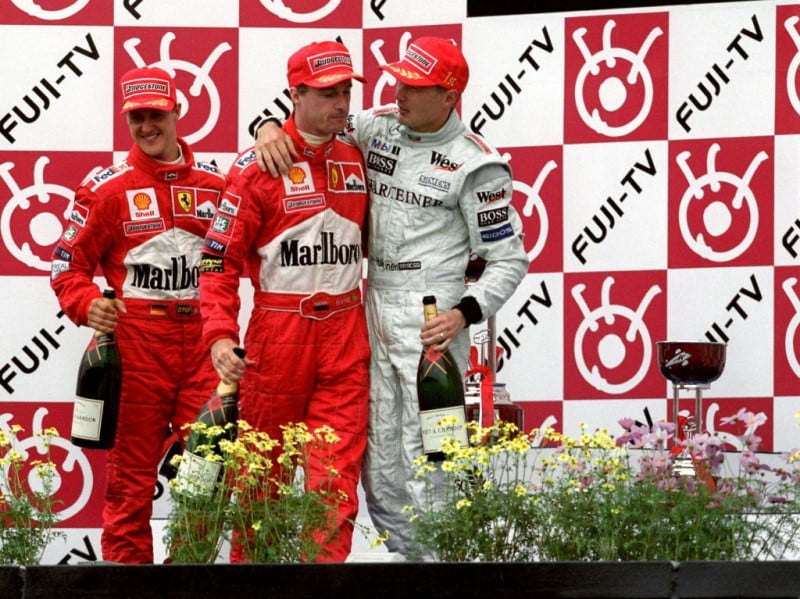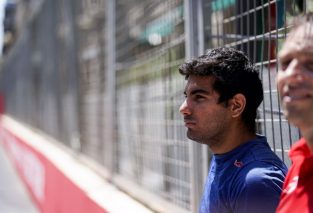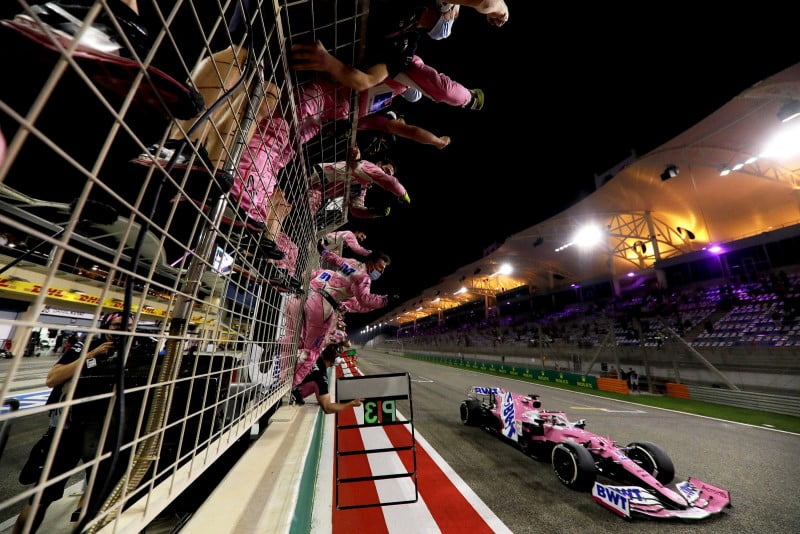‘Know Your F1 Circuit’ is a new series launched on my F1 blog. The posts under this series are penned by Saumil Patel, an avid fan of the sport. You can follow the full series throughout the season by using the ‘Know Your F1 Circuit’ tag. This post has a nice twist – looking at the Austrian GP history to rate the top-5 races over the years.
1. Austrian GP history: 1984 goes straight to the top of the leaderboard
A super charged partisan crowd rooting for the local lad Niki Lauda (P4 on the grid), a championship balanced on a knife’s edge, add the thrills and spills of Formula 1 racing and you have one hell of a thrilling episode.
The race had to be restarted due to the starting light problems which triggered total chaos on the grid. Drivers were fortunate not to get rear ended. In the interim, Mclaren decided to change their tyres on the grid much to the chagrin of Piquet (pole position) and other drivers. In retaliation an angered Piquet led the formation lap on a crawl not allowing either Mclaren drivers to scrub their new tyres. Alain Prost (Lauda’s team mate) running second was plagued by gear selector problems. He was forced to drive with one hand on the steering wheel and the other on the gear lever. On lap 28 he hit an oil patch and spun out of control and retired. Lauda who was trailing for a while, found his opportunity and overtook Piquet who had tyre issues.
Niki Lauda won the home race by 23 seconds to the crescendo of cheers from his home crowd.
2. Austrian GP history: split hair victory in 1982
The 1982 Austrian GP had a very close finish margin – that of a mere 0.050 seconds!
The Lotus 91 driven by Elio de Angelis was not recognized as a stable performer, but the Indycar set up of staggered camber, lowered height ride and softer tyres on the right-hand side along with the foam used to seal the skirts of the sidepods may have made the difference.
Keke Rosberg in his Williams-Cosworth FW08 was continuously closing on de Angelis in his Lotus 91. With two laps to go he was trailing by 1.6 seconds. On the penultimate lap the Lotus developed engine stutter which allowed Rosberg to close the gap on the final corner. But it was not enough, he fell short by a car length.
It was the fourth closest finish in Formula 1 history.
3. Austrian GP history: clash of the Young Turks in 2019
The 2019 Austrian GP was scripted between Charles Leclerc (Ferrari, SF90), the pole starter, and Max Verstappen (Red Bull, RB15) who was second on grid. Leclerc got off to a clean start and led the race. On the other hand, Verstappen had a nightmare of a start. His car went into anti stall mode relegating him to P8. By lap 9, Verstappen inched his way up to P5, still trailing Leclerc by 15 seconds.
Between laps 20 and 29, Mercedes and Ferrari had pitted their drivers. Verstappen stayed on track for an extra lap and gained a place over Hamilton who had a 11 second pitstop to replace his nose. By mid-race Leclerc lead Bottas by four and a half seconds, Vettel trailed Bottas by five seconds and Verstappen trailed Vettel by three and half seconds.
Verstappen passed Vettel on the straight after corner two in lap 50 and comfortably overtook Bottas on lap 56. By this stage, the Red Bull Racing driver was trailing Leclerc by five seconds. Pushing hard, Verstappen was steadily closing in on Leclerc. By lap 68 he took his chance and tried to overtake Leclerc by getting in from the inside of the sharp right-hander at Turn 3, using the apex but Leclerc thawed his move on the exit making good use the Ferrari’s superior traction and out dragging the Red Bull.
On the very next lap and at the same corner, Verstappen exploited the vacant inside line, braked deeper and ran slightly wider at the apex giving little width which forced Leclerc of the track and took the lead to a dramatic race finish.
4. Austrian GP history: one for the team in 2002?
The 2002 Austrian GP will shamefully go down in the annals of history for displaying the worst of sporting spirits. Starting on pole, Ferrari’s Rubens Barrichello made the perfect start with team mate Michael Schumacher a close second. Barrichello led the race and was followed by Ralf Schumacher, Michael Schumacher and Juan Pablo Montoya. On lap 61, after Barrichello’s second pit stop Schumacher took the lead for one lap, till he pitted and rejoined second.
On the 63rd lap, Ferrari’s Team Principal Jean Todt ordered Barrichello to surrender the top spot to his teammate Schumacher so he could strengthen his position in the Drivers’ Championship. In turn, Barrichello reminded Todt of his promise of not asking him to relinquish his position, to which he was curtly reminded of keeping the team’s best interest in mind.
At the start of the penultimate lap, Barrichello was ahead of Schumacher by a second and there was no way he could not win, but he braked in the final 100 yards to the finish line allowing Schumacher to pass and claim victory. This angered the crowds and Ferrari was repetitively booed and given the thumbs down after the race, during the podium ceremony and in the press conference.
Barrichello, the gentleman that he was, summed it up by saying, “I’m going through a period of a very good time of my life. I’m becoming a better person, a better driver, so there’s no point in arguing. I think my determination will bring me a lot more wins, so that’s the way I see it, so there’s no point arguing.”
Team orders were soon outlawed – albeit temporarily.
POV: You’re making your way into the Austria paddock ?#AustrianGP ?? #F1 pic.twitter.com/AOft3AgVjJ
— Formula 1 (@F1) July 2, 2021
5. Austrian GP history: rain reigns in 1978
The 1978 Austrian GP was flagged off on a damp track which got wetter as the race progressed, turning the track into a slimy giant water slide.
Ronnie Peterson started from pole position followed by team mate Mario Andretti and Jean-Pierre Jabouille in his turbocharged Renault. On Turn 1, Carlos Reutemann (P4) edged out Andretti for second place. Andretti in a bid to recover his position tried to overtake Reutemann on same lap but made contact and spun out of control, crashed into the barriers and retired.
By the fourth lap the rains were incessant. Reutemann spun off and was beached. Seeing the treacherous situation, the marshals push-started his car so he could rejoin. In the mean time another driver crashed and the race was halted because the wet dirt and mud had made the track dangerously slick.
Once the rains stopped the race was restarted with Peterson in the lead followed by Patrick Depailler (P13) and Niki Lauda (P12). As the tracks dried, Reutemann pressed on and overtook Lauda, but he was black flagged for receiving outside assistance. A bit later, Lauda crashed out and promoted Gilles Villeneuve to third. The race ended in the same chronology, but the time difference between the winner and runner up was more than 47 seconds.
Twelve cars were retired due to accidents.
Saumil Patel is an avid fan of Formula 1. He aims to take you deeper into the sport by uncovering the lesser read.














